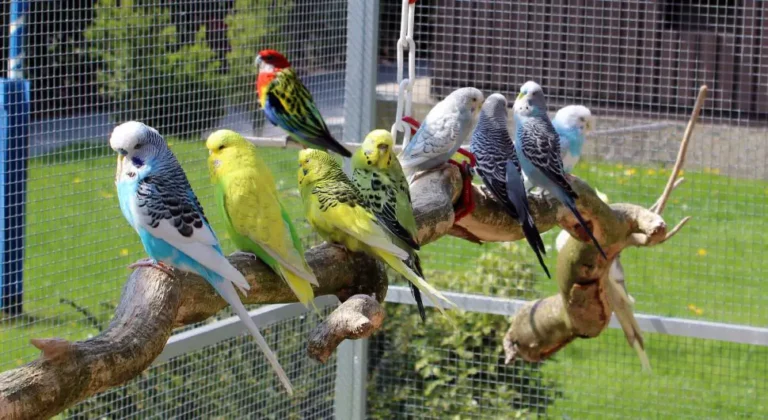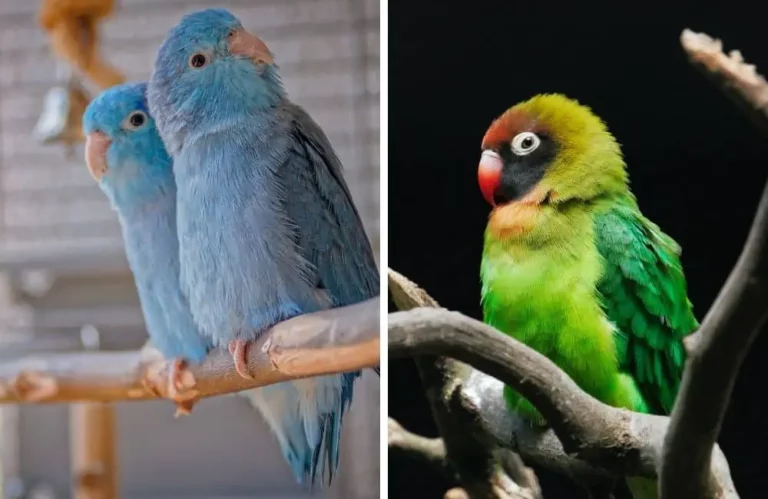Guide to Pet Bird Species: Characteristics & Behaviors
Welcome to our comprehensive guide on pet bird species characteristics and behaviors! Birds are fascinating creatures with vibrant personalities, and each species has its unique traits and quirks.
Understanding the behavior and characteristics of different bird species is essential for any bird enthusiast or potential bird owner, as it helps you to choose the perfect feathered companion suited to your lifestyle and provide them with the best care possible.
In this guide, we’ll explore various pet bird species, delving into their distinctive features, social behaviors, and specific care requirements.
From the ever-popular parrots to the melodious canaries and finches, our aim is to help you gain insight into the world of pet birds and equip you with the knowledge needed for a healthy, happy relationship with your avian friend.
So, whether you’re a seasoned bird owner looking to expand your knowledge or a first-time bird enthusiast trying to choose the right pet bird, you’ll find valuable information in this guide.
Let’s embark on this colorful journey through the world of pet birds and discover the wonders of their characteristics and behaviors.
Bird Species Overview
A diverse range of pet bird species have found their way into our hearts and homes as cherished companions. To better understand the world of pet birds, it’s crucial to familiarize yourself with the unique traits and characteristics of these amazing creatures.
Common pet bird species
- Parrots: This diverse group includes popular species such as African Greys, Macaws, and Lovebirds. Parrots are known for their intelligence, colorful plumage, and impressive mimicry abilities.
- Canaries and Finches: These small, lively birds boast a remarkable vocal range, especially among the male canaries. Their vibrant colors and active behavior make them delightful pets.
- Cockatiels: Native to Australia, these friendly, affectionate birds are known for their expressive crest and playful nature. They make excellent companions, especially for first-time bird owners.
- Budgerigars (Budgies): These small parakeets are popular pets due to their bright colors, cheerful disposition, and ability to mimic human speech. They thrive on social interaction and form strong bonds with their owners.
Unique traits and characteristics
Each pet bird species possesses its own set of characteristics, such as size, lifespan, temperament, vocal abilities, and color patterns. Understanding these traits is essential in choosing a bird that aligns with your preferences, lifestyle, and living environment.
For instance, some birds, like parrots, may require more social interaction and mental stimulation, while others, such as canaries and finches, are more independent and low-maintenance.
Species-specific care requirements
Taking into account the specific needs of each bird species is paramount in providing proper care and ensuring their well-being. For example, dietary needs, housing requirements, and ideal temperature and humidity conditions can vary significantly between species.
Researching these factors and tailoring your care to meet your bird’s needs will help you build a strong, lasting bond with your feathered companion and ensure their happiness and health.
Parrots

Parrots are a diverse and captivating group of birds known for their intelligence, beauty, and remarkable ability to mimic sounds, including human speech. With over 400 species worldwide, parrots come in various sizes and colors, making them an attractive choice for many bird enthusiasts.
Types of parrots
- Macaws: The largest parrots, macaws are known for their striking colors, long tails, and powerful beaks. They have strong personalities and can be quite playful and affectionate.
- African Greys: Often regarded as the most intelligent pet bird species, African Greys have remarkable cognitive abilities and can mimic a wide range of sounds with exceptional accuracy.
- Lovebirds: These small, vibrant parrots form strong bonds with their mates and are known for their playful, inquisitive nature.
- Conures: This group of medium-sized parrots is characterized by their outgoing personalities, bright colors, and versatility in adapting to various living environments.
- Cockatoos: With their striking crests and expressive personalities, cockatoos are both affectionate and demanding, requiring a great deal of attention and care from their owners.
Social behaviors
Parrots are highly social creatures that thrive on interaction, both with their own kind and with humans. In the wild, they live in flocks, engaging in communal activities such as grooming, foraging, and vocalizing.
In captivity, parrots need regular social interaction to prevent loneliness, stress, and undesirable behaviors such as feather plucking or excessive vocalizations.
Communication abilities
One of the most fascinating aspects of parrots is their ability to mimic sounds and human speech. Some species, like African Greys, are particularly adept at this skill, while others may only learn a few words or phrases.
Parrots use vocalizations to communicate with their flock members, express emotions, or simply to entertain themselves. Providing your parrot with regular social interaction, mental stimulation, and a rich environment can help nurture their innate communication abilities and prevent boredom or stress.
Canaries and Finches
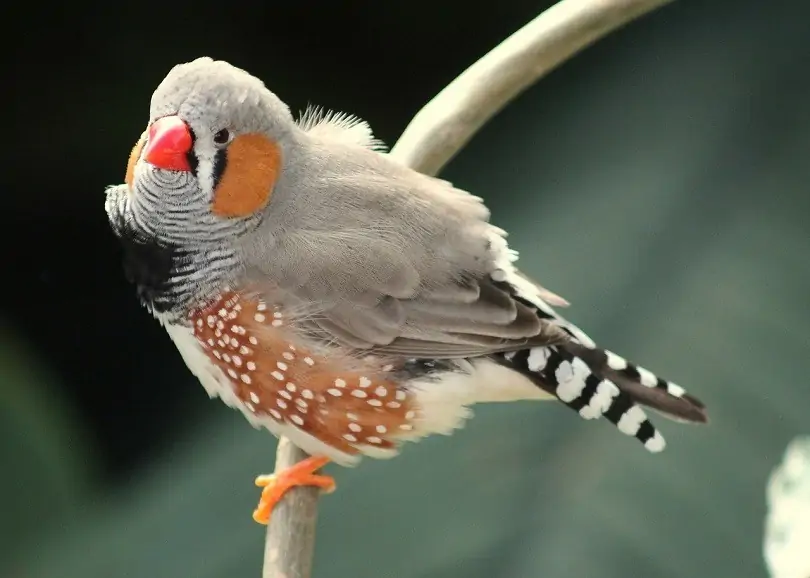
Canaries and finches are small, charming birds admired for their melodious songs and lively, active behavior. They make delightful pets for those who appreciate their enchanting tunes and low-maintenance care requirements.
The singing marvels
Canaries are known for their beautiful songs, which are unique to each individual bird. Males are typically the most accomplished singers, using their songs to attract a mate. Finches, too, produce melodious vocalizations, albeit less elaborate than those of canaries.
These tiny birds are often seen fluttering energetically around their living space, filling the air with their cheerful chatter.
Distinct colors and markings
Canaries and finches display a dazzling array of colors and markings, making them a visually appealing addition to any home. Canaries come in various shades of yellow, orange, red, green, and even white, while finches boast vibrant hues such as bright red, orange, blue, and gold.
Some finches, like the Zebra Finch, have distinct markings that resemble stripes or bands.
Compatibility with other birds
Canaries and finches can often coexist peacefully with other birds of the same or similar species.
In some cases, they may even be housed together, provided that their living space is spacious enough and there is no competition for resources like food, water, or perches. However, it’s crucial to monitor their interactions closely and intervene if signs of aggression or stress become apparent.
Additionally, it’s essential to remember that these birds have unique care requirements and should not be housed with larger, more dominant species like parrots.
Cockatiels
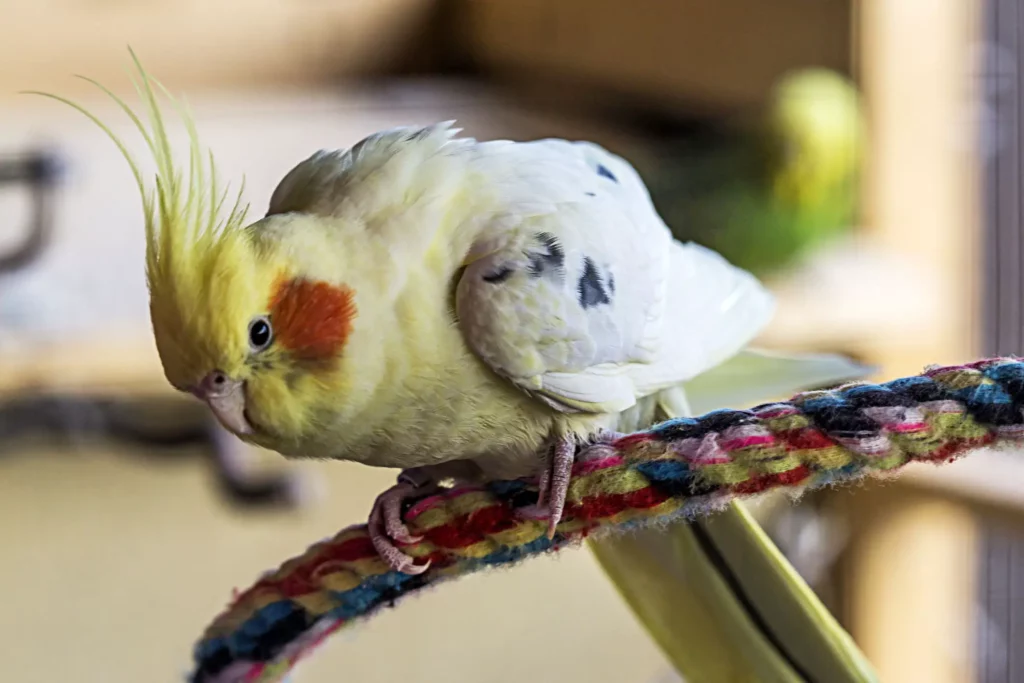
Cockatiels are small, charming parrots native to Australia. They are known for their affectionate, friendly nature, making them an excellent choice for first-time bird owners and families alike.
Appearance and lifespan
Cockatiels are characterized by their distinctive crest, which expresses their emotions and mood. They have an array of color mutations, such as the classic grey with yellow and orange cheek patches or variations like lutino, pied, and cinnamon.
Cockatiels typically have a lifespan of 15-20 years, though with proper care, some individuals may live even longer.
Companionship and playfulness
Cockatiels are social creatures that form strong bonds with their owners, often seeking their companionship and affection. They enjoy being handled, petted, and cuddled, making them an ideal choice for those looking for a close relationship with their bird.
Additionally, cockatiels are playful and curious, enjoying activities like climbing, exploring, and playing with toys.
Bonding and socializing
Building trust and establishing a positive relationship with your cockatiel is crucial for their well-being and happiness. Regular, gentle interaction, coupled with patience and consistency, can help your bird feel safe and secure in your presence.
As they become more comfortable, they may start to mimic your actions, whistle tunes, or even attempt to speak. Providing a stimulating environment, including toys and perches, can further encourage socialization and help prevent boredom or stress.
Budgerigars (Budgies)
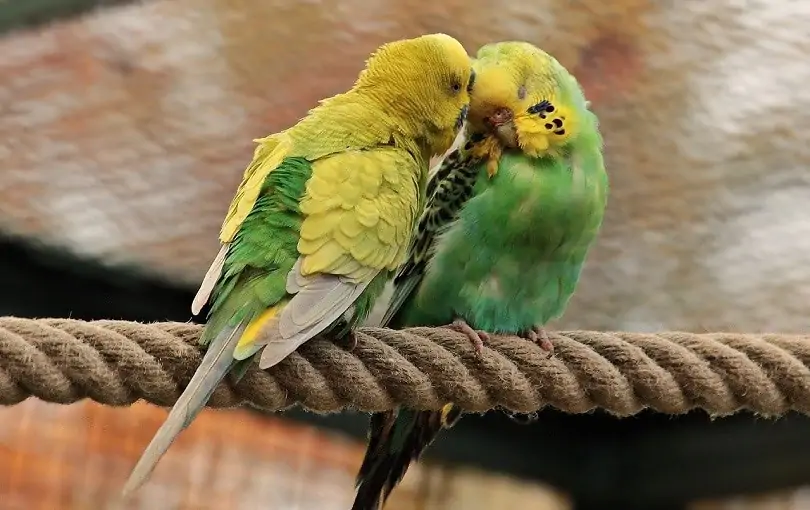
Budgerigars, commonly known as budgies, are small parakeets that originate from Australia. They have gained immense popularity as pets due to their small size, cheerful disposition, and ease of care.
Small size, big personalities
Budgies may be small in size, but they have big personalities that make them endearing companions. They are active, playful birds that enjoy engaging in various activities such as climbing, swinging, and exploring their surroundings.
Budgies come in a variety of colors, including green, blue, yellow, and white, which adds to their appeal.
Mimicry abilities
Though not as proficient as some larger parrots, budgies are still capable of learning to mimic sounds and human speech. They tend to have a unique, high-pitched “voice” when speaking, which can be quite endearing.
With patience and consistent training, budgies can learn a surprising number of words and phrases.
Social needs and interaction
Budgies are social birds that thrive on interaction with their own kind as well as their human companions. In the wild, they live in large flocks, engaging in activities such as preening, foraging, and vocalizing.
To ensure a happy and healthy life for your budgie, it’s important to provide regular interaction, mental stimulation, and a comfortable living environment. If you’re unable to spend ample time with your budgie, you might consider adopting a pair, as they can keep each other company and fulfill their social needs.
However, it’s essential to monitor their interactions and provide enough space and resources to prevent competition or aggression.
Frequently Asked Questions
Are some pet bird species more suitable for first-time owners?
Yes, certain species like budgies, cockatiels, and canaries are often recommended for first-time bird owners due to their smaller size, ease of care, and overall friendly demeanor.
Can different pet bird species coexist in the same living space?
Some pet bird species may coexist peacefully, while others might display aggression or territorial behavior. It’s important to research compatibility and provide separate cages or living spaces for different species if necessary.
How can I ensure my bird gets enough exercise?
Provide ample space in the cage, add perches at varying heights, and offer toys for climbing and swinging. Additionally, consider supervised out-of-cage time, allowing your bird to fly or explore in a safe, secure area.
Do all pet bird species require the same diet?
No, different pet bird species have unique dietary needs. It’s essential to research your bird’s specific nutritional requirements and provide a balanced diet of pellets, seeds, fruits, and vegetables accordingly.
How do I know if my bird is happy and healthy?
Observe your bird’s behavior, activity levels, and overall appearance. A happy and healthy bird will be alert, active, have bright eyes, and display good hygiene. Consult with an avian veterinarian if you notice any sudden changes or signs of illness.
Final Thoughts
Pet birds are fascinating and rewarding companions that come in a variety of species, each with its unique characteristics and behaviors. When considering adding a bird to your family, it’s essential to research the specific needs and requirements of the species that best matches your lifestyle and living situation.
By understanding your bird’s behavior, providing a suitable living environment, and ensuring proper nutrition and care, you can develop a deep bond with your feathered friend and enjoy the rich companionship they bring to your life.
Furthermore, it’s crucial to consider ethical implications when obtaining a pet bird and to explore the benefits of adoption, as many birds in need of rescue are waiting for their forever homes.
By being a responsible and committed bird owner, you can help promote animal welfare, enrich the lives of these captivating creatures, and create a loving home for your pet bird for years to come.



